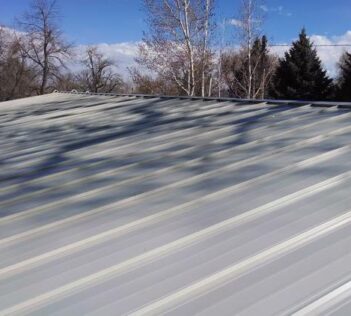
Tiny House Roof Maintenance: Tips to Help Take Care of Your Tiny House Roof
Having a tiny house is an exciting experience, but it also comes with the responsibility of taking care of its roof. A well-maintained top can keep your home safe from harsh weather conditions and last for many years. Whether you’re a newcomer to the world of tiny houses or an experienced owner, here are some tips on how to properly take care of your tiny house roof.
Repair Damage ASAP
Making adjustments and fixes as soon as possible is essential in order to ensure its long-term maintenance and protection. Homeowners all over Harnett County are advised by their roof repair contractors near Dunn, NC to attend to these issues when they notice them in order to avoid further trouble. Tiny houses are usually made of light, often flimsy materials, which can easily become damaged when exposed to the elements. Rain, high winds, and hail can all cause significant damage to a tiny house roof, leading to costly repairs or even replacement. Therefore, it’s important to always inspect it regularly for any signs of damage and repair any small issues immediately before they become a hassle.
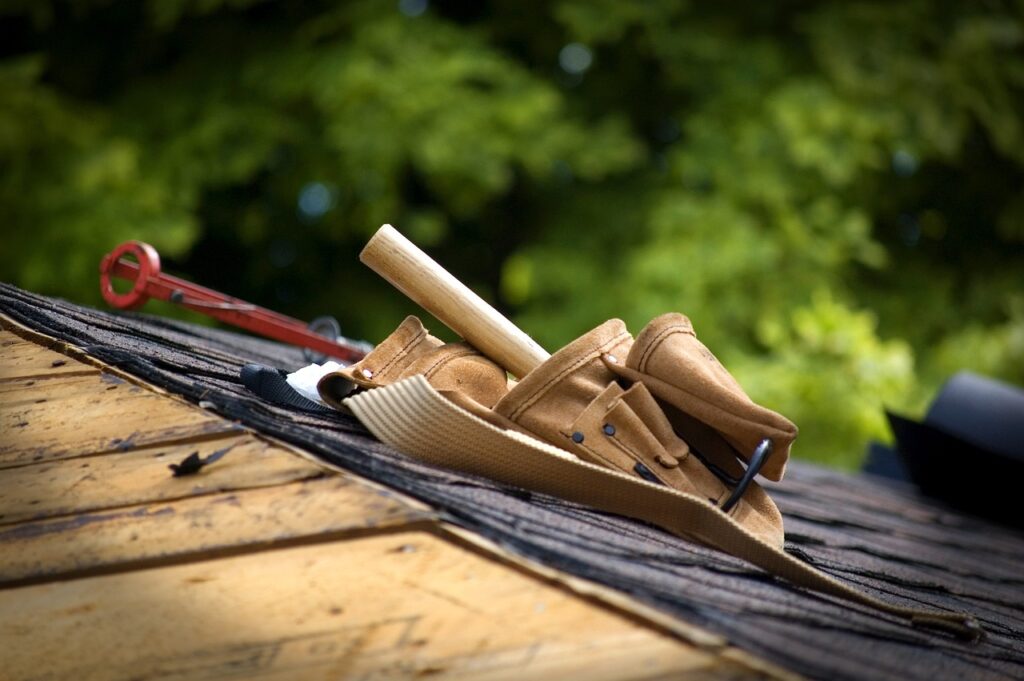
When undertaking repairs on a tiny house roof, it’s important to use high-quality materials that are specifically designed for use on small structures. Poorly installed shingles or tiles can cause leaks that can result in further damage and costly repairs. Additionally, it’s best practice to seal any gaps between shingles or tiles with a compound that is resistant to weathering and rot.
When undertaking these repairs, especially when it comes to metal roofing, it’s important to use high-quality materials that are specifically designed for use on small structures. Poorly installed shingles or tiles can cause leaks that can result in further damage and costly repairs. Additionally, it’s best practice to seal any gaps between shingles or tiles with a compound that is fire-resistant and can withstand weathering and rot.
Inspect It Regularly
It is important to call professional roofers to have it inspected at least once a year, preferably more often if possible. During this, look for any signs of damage or wear, including the following:
- missing shingles
- cracked tiles
- structural abnormalities
- leaks
- flashing
- gutters and downspouts
- Moss and algae growth
- roof decking
- the attic
- the underlayment
- skylight
- under the eaves
- the fasteners
- the roof pitch
To ensure the long-term performance of a tiny house roof, owners should perform regular inspections and maintenance tasks. For example, no matter the roof style, it should be swept and cleaned of dirt, debris, and moss growth. Additionally, owners should check for any signs of water damage as well as ensure that the roof is sealed properly in order to prevent leaks. Taking these steps, along with a warranty, will help protect against costly repairs in the future while prolonging the service life of the roof system.
Keep The Roof Clean
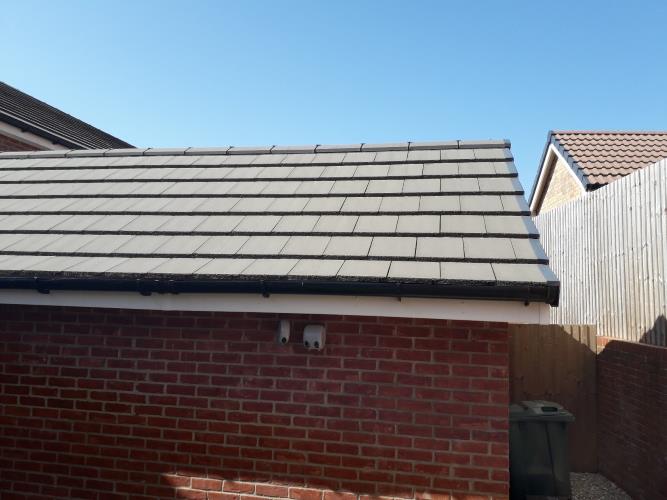
Keeping the roof clean is an important part of ensuring it lasts for many years. A few simple steps can help keep the roof looking great and in good condition, and you can easily DIY this.
To do this, remove any debris such as leaves, twigs, and pine needles. This will not only make the surface look better but also help reduce potential fire hazards caused by built-up flammable materials on any type of roof. It is also recommended to use a pressure washer or soft brush to remove dirt and grime buildup which can trap moisture against the surface and cause leaks or other issues.
Finally, it’s essential to check around vents, pipes, and other penetrations in order to ensure they are adequately sealed and there are no gaps where air can escape or leakage can occur. This will prevent water from entering the tiny house living space during wet weather conditions.
Trim Nearby Trees
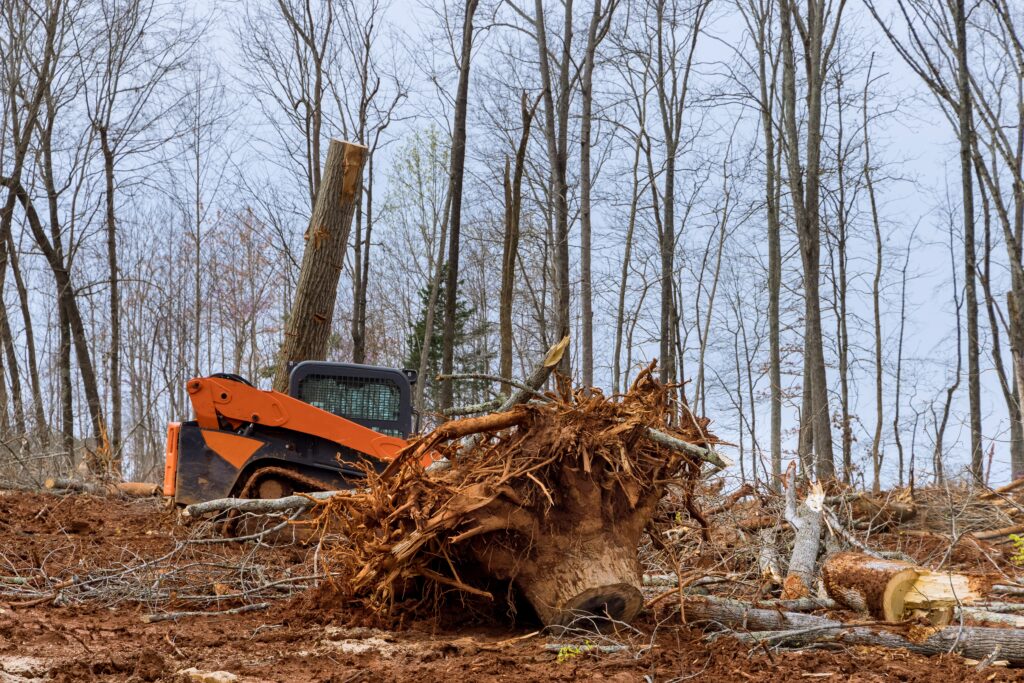
It is critical to prune any trees, bushes, or shrubs that are close to the roof, as they can cause significant damage and may even lead to a collapse. Branches that overhang the top can become heavy with ice and snow in the winter months and cause damage from the weight alone. Aside from that, branches may also rub against the asphalt shingles or scrape them away in windy weather, leading to leaks or further damage.
Trees also provide shelter for pests like birds, squirrels, and raccoons that could make their way into vulnerable areas in traditional homes like attics and crawlspaces. Trimming them away reduces this risk significantly as well as preventing any droppings from staining your shingle roof. Additionally, it is important to trim trees so they are at least 6-8 feet away from your house – any closer than this can create problems in terms of air circulation and ventilation.
Seal Any Cracks
Sealing any cracks is an important step in taking care of the roof, as water can easily seep in and cause extensive damage. To ensure that the roof remains intact, it is important to inspect it on a regular basis for any signs of damage or leakage. Once identified, the cracks should be sealed with a sealant product designed specifically for roofs.
The most common type of sealant used on homes with 600 square feet or less is elastomeric coatings. These roofing materials have the ability to expand and contract with temperature changes, making them well-suited for roofs that may experience extreme temperatures over time. Elastomeric coatings also form an effective waterproof barrier against moisture and dirt infiltration, improving your energy efficiency.
Maintain The Gutters
Maintaining the gutters of a tiny home roof is an essential part of good care. Without regular cleaning and inspecting the gutters, debris can quickly accumulate, causing clogs which can lead to serious issues including water damage and structural damage over time. To maintain the gutters and ensure that they remain in proper working order, it is important to clean them at least once a year
When cleaning, it is important to use a ladder and gloves for safety purposes. Begin by removing all of the debris from the gutters with a garden trowel or similar tool, then rinse them out with a hose. Be sure to inspect for any damage in the process as well. If any holes, cracks, or rust are found, they should be repaired promptly.
Consider Roof Coating
No matter what roofing options you’re using, the coating is an excellent option for those seeking to take care of a tiny house roof. Not only does it provide an extra layer of protection from the elements, but it also provides a longer lifespan for the roof itself. A roof coating can help minimize damage due to extreme temperatures and weather events and add additional insulation. It can also be used to improve the aesthetic value of a tiny house, as some coatings are available in a variety of colors. A roof coating can be applied easily and cost-effectively, making it an ideal solution for owners looking to extend the life of their roofs.
Taking care of your tiny house roof is an important part of home maintenance. By trimming nearby trees, sealing any cracks, and maintaining the gutters, you can reduce damage from weather conditions and extend the life of your roof. Additionally, considering a roof coating may be beneficial for those looking to add extra protection or improve its aesthetic value. With regular maintenance and proper upkeep, your new roof should remain strong and long-lasting!
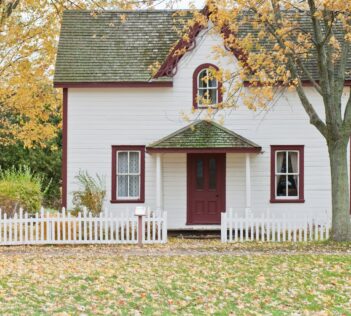
4 Essential Pieces of Furniture for Your Super Tiny Home
Living in a super tiny house can be incredibly rewarding, not just financially but also emotionally – you don’t need to have a lot of stuff in your tiny home to feel at ease. But when it comes to furnishing your small space, you want crucial pieces of furniture that will contribute to the overall comfort and utility without crowding valuable floor space or blocking walkways. Unlike the city, your appliances and utilities must also be energy efficient and durable, because tiny home living is now easy! Although finding the right tiny house furniture is hard as it requires careful thought— we provide you 4 things you should think about when owning a Tiny home.
1. Good Office Chair
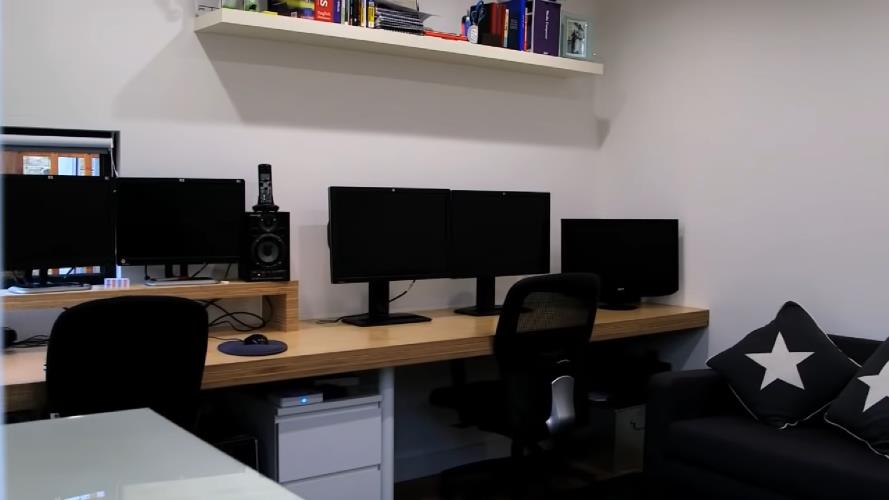
Whether you work from home or just need a place to study, having an ergonomic office chair is essential. This will ensure that you have comfortable seating for hours-long tasks and can help prevent any neck or back pain. You can find MyDeal office chairs in various sizes, designs, and functions to fit your specific needs. It’s important to choose the one that provides you with the most support and fits in your small space.
2. Multipurpose Storage System
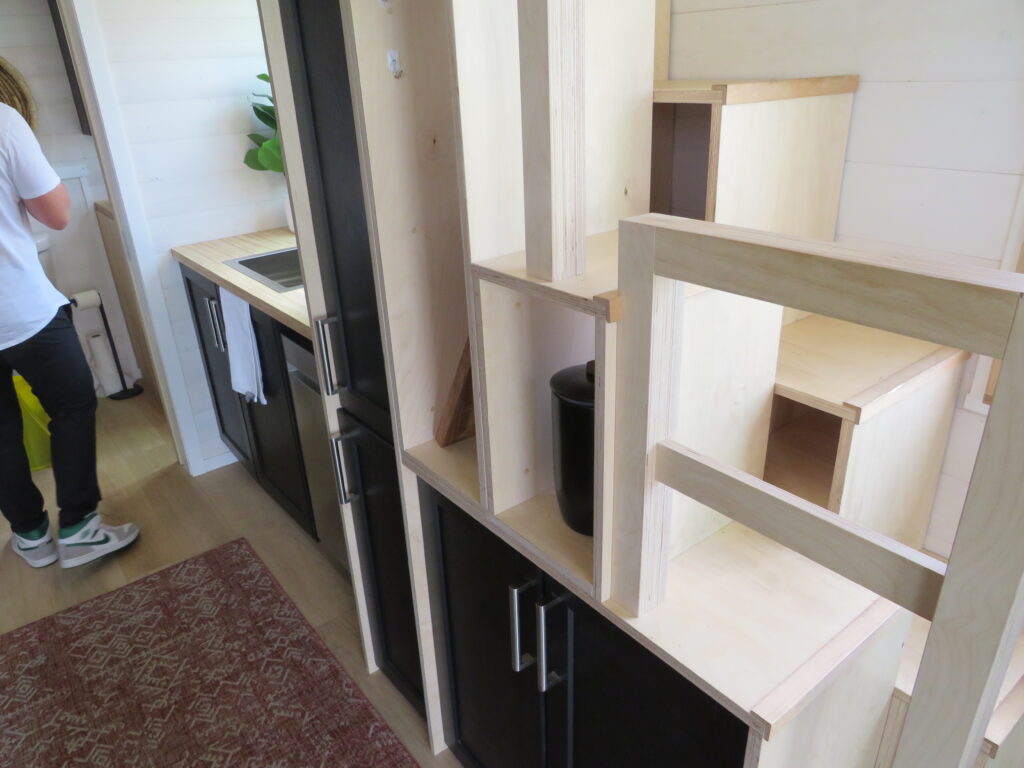
If you live in a small space, it is important to make the most of every inch. You can do this with a multipurpose storage system that combines comfy seating with storage. This will allow you to keep items out of the way and easily accessible when needed.
Look for furniture pieces such as ottomans designed to save space, an Ikea bench with a built-in shelving unit, or a well-designed coffee table with a lot of drawers, that offer both comfort and storage space.
Consider adding DIY shelves or drawers to your multifunctional living room furniture to maximize your storage capacity even further. Investing in tiny home furniture can save you money and give your home an organized look.
3. Compact Dining Table/ Side Table
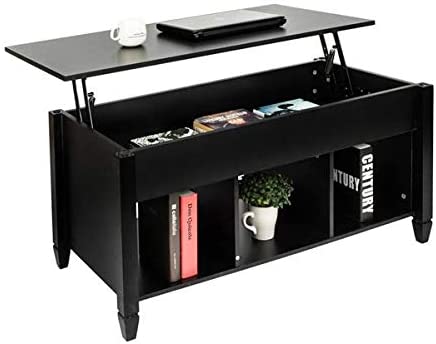
A compact dining table or side table is an essential piece of furniture for any super tiny home. It can be used to eat meals, store food and kitchen equipment, or as a workspace if you need one.
Look for a side table that has enough square footage to fit your laptop and other items you might use while working. If you’re tight on space, consider investing in a foldable tabletop that can easily be stored away when not in use. If possible, try to find a folding table with adjustable legs, so it can serve multiple purposes at different heights. This will optimize your dining room floor plan and keep your home office minimalist.
4. Convertible Sofa Bed
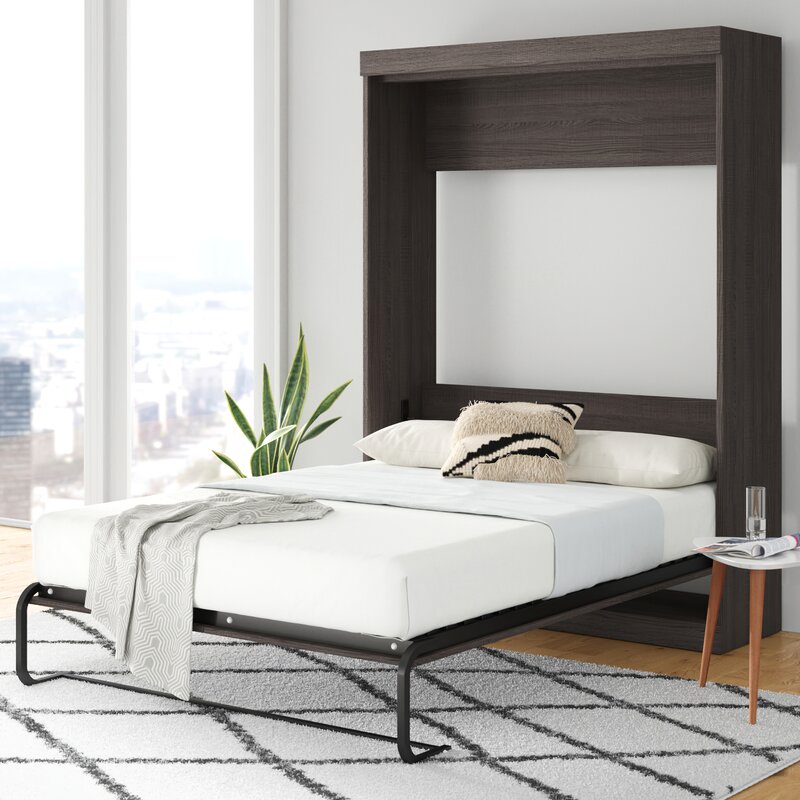
When you live in a tiny home, it’s important to purchase furniture that can serve multiple purposes. This makes your small apartment more manageable. A convertible sofa bed or futon is a perfect solution for such a small space because it can be used as both a sofa and a bed! This is peak tiny house living. With the right model, you won’t need to sacrifice comfort or style in your living area. Convertible sofas (like murphy beds) come in various sizes and fabrics, allowing you to customize your living space exactly how you want it and gain extra space when it is not in use.
Living in a super tiny home doesn’t mean homeowners have to give up comfort or style. With these four essential pieces of furniture, you can make the most of your small space while still enjoying all its benefits. We have suggested furniture ideas that are dual-purpose and adjustable to make the most out of every inch of your tiny home. Investing in quality furniture will ensure that it lasts for years, and you won’t have to worry about replacing it anytime soon.
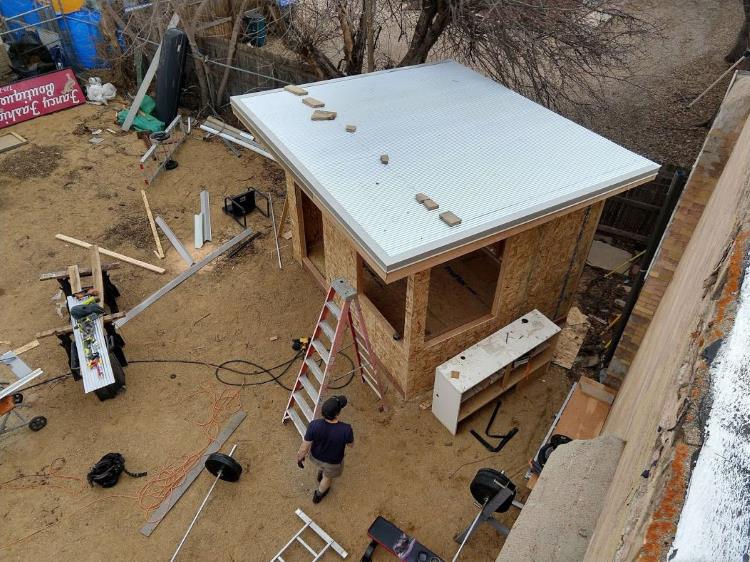
Tiny Home Roof Repair Tips From the Experts
When you discover damage to the roof of your tiny home, it is vital you act fast to ensure the damage does not worsen which would cost you more time and money. By following these repair tips, you can fix the damage on your tiny house roof more easily and learn how to prevent it from happening in the first place.
The Importance Of A Roof
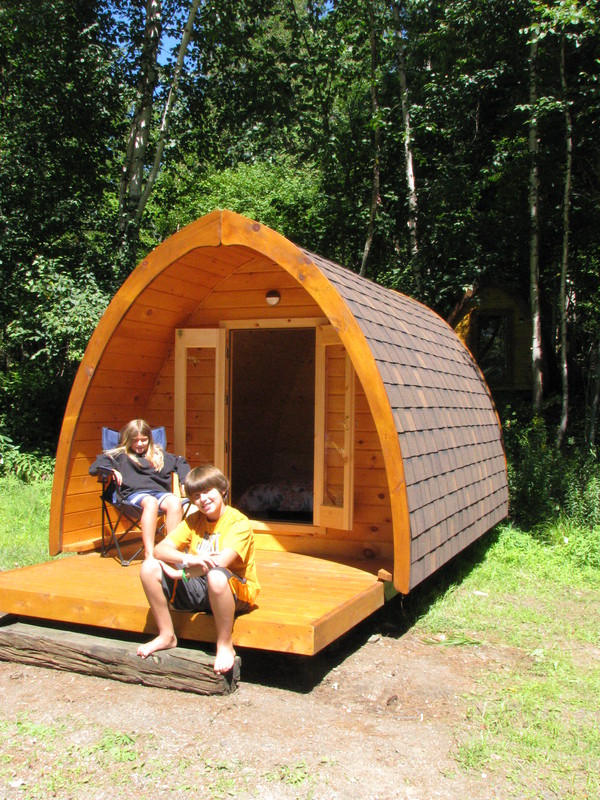
The roofing system of your tiny house plays a crucial role in retaining heat, increasing energy efficiency, keeping water out, air ventilation, and physical protection of the inside of your home from various other factors. Home improvement is something homeowners should take seriously and invest in.
- Water: Water can obviously cause a lot of direct damage, but even excess moisture in the air can cause problems within your home, such as mold, so it is important to manage.
- Heat retention: Having an air-tight roof will improve the efficiency of your home because less heat will escape, so you won’t spend as much on heating your living space in the winter months. Air-tightness will also stop moisture in the air from entering.
- Ventilation: whilst having an air-tight roof can be important, a vented roof will encourage natural airflow which can dry moisture.
An unvented roof is a more modern approach and allows you to use more roof space for things like storage, which is important in your tiny house. These days, we can ensure a roof that is fully sealed which won’t allow any air in, so it is becoming more common to use.
Prevention Of Damage
Whilst it is great to know how to fix a problem, it is better to be able to prevent it from happening in the first place or occurring again and again. There are a variety of issues that can cause a fault in your roof, so ensure you frequently check and take action on the following.
Prevent Mould
Mold is a fungus that feeds off organic material, such as wood on your roof. This can decompose and weaken the structural integrity of your roof. Prevent mold by limiting moisture in your home by ensuring it is well-ventilated and build-ups of moisture are avoided. This can include opening windows, turning on the fan when you have a shower and
Keep Animals Out
Nesting birds and animals looking for bugs to feed on can cause them to work their way into your roof by tearing up your roof. You can find affordable and durable shingles that won’t be as easily damaged because of their impact-resistant properties. If a single shingle is damaged, a single one can be easily replaced and installed.
Replace Damaged Materials
As soon as you notice any wear and tear in your roof, such as cracked shingles or missing tiles, it’s important to replace these as soon as you can. This is because water can more easily enter the roof space which can cause a range of problems, not just the occasional dripping of water on your head when it rains.
Check Surroundings
Try to check the surroundings of your house to see if there are things like weakened trees that could fall on your home. It’s a good idea to do this after a storm or strong winds which may have damaged a tree branch.
Clean Out Gutters
Debris can pile up in your gutters which prevents water from draining properly. This can cause water to leak into your roof and cause problems such as rot. The angle of your roof is also important for rainwater run-off, so look into whether that is causing issues for you.
Prevent Ice Dams
Without taking proper precautions, you may develop ice dams on your roof. These are icicles that form when water runs down the roof (often snow melt) and refreezes on the edge; this normally occurs because parts of the roof are warmer, but the edges remain below freezing. This creates a rim of ice that can trap more water behind it, creating a dam, where the excess water builds up and works its way under shingles.
You can prevent ice dams by ensuring your roof is air-tight by sealing gaps with foam, or by increasing insulation in your roof space. Alternatively, you can opt for increasing ventilation; this draws in cold air and flushes out warm air from the attic, which cools the roof space down and evens out the temperature.
Type Of Roof
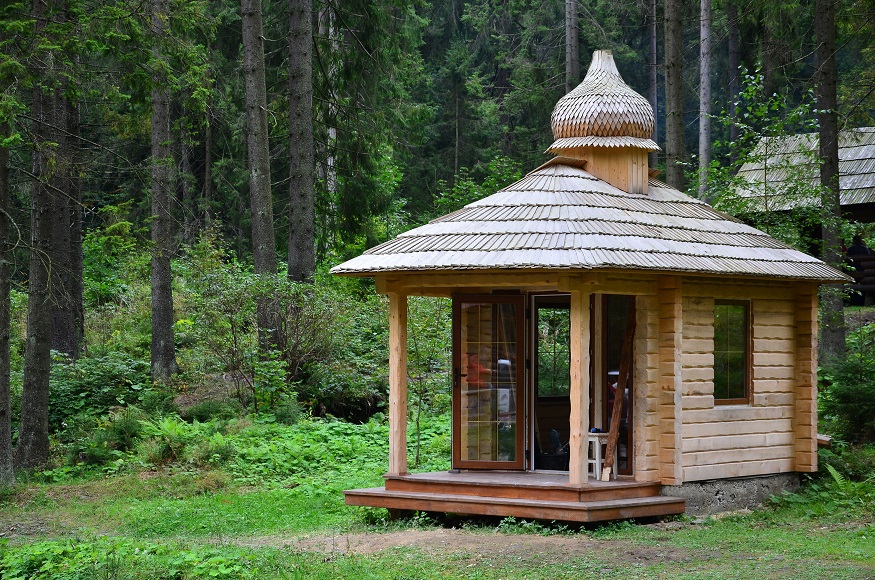
With a tiny home, there are many roofing options when it comes to roofing materials. This includes flat rubber, asphalt shingles, metal roofs, shingle roofs, thatched, and green. Each of these will have pros and cons, with different maintenance requirements, aesthetics, and sustainability. There are several types of roofs, such as flat roofs and gable roofs, and the roof pitch varies between each. Depending on the climate, some roof styles are more efficient and long-lasting. Whatever option you have should be high-quality to ensure water cannot enter, otherwise, it’s going to cause you a lot of options and you may end up having to replace or make a new roof.
Tips For Finding A Leak
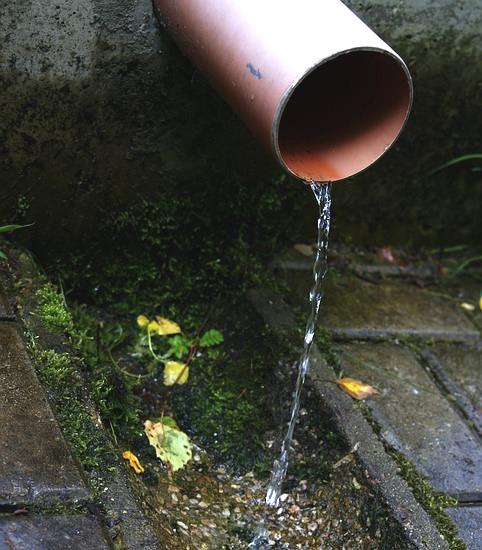
What Are The Signs Of A Leak?
Leaks, caused by things like damaged shingles and ice dams, are usually made obvious by water stains along ceilings or walls. You may also notice peeling paint, rusting metal objects (such as drywall fasteners), mold, and sagging sheetrock.
How Do I Track Down The Leak?
Firstly, look slightly uphill at where the inside damage is when you’re on the roof. Look for damaged shingles, and any penetrations in the roof (including vents, plumbing, and chimneys). The damaged area may not seem to directly correlate to the leak inside because the water may travel through the roof space before reaching the inside of the home.
- Use a hose: If you cannot find the origin of the leak, use a hose to soak certain spots for at least 10 minutes and grab someone to check for water inside. Systematically work your way around the roof until you find the place the water is entering.
- Look under shingles: You may find you have to pull out shingles to inspect under them if the hose method does not work. Look for discolorings on felt paper, and water stains or rot on the wood.
- Look at joints: chimneys and vents areas are more prone to erosion so these should be one of the first spots to check.
The great thing about a tiny home is that it’s tiny. Finding a leak will be much easier than if you had a large roof where you need to inspect each square foot, so this should save you a lot of time and frustration!
Tips For Fixing A Leak
Most of the fixes are DIY so you don’t need expensive tools or materials, but have a handyman or a roofing contractor with experienced roofers available in case the leaks are worse than they seem.
Remove Shiners
Shiners are nails that were not nailed in the correct place. Instead of into the roof framing, they missed and you will be able to see a nail poking through. Water can condense on these nails and frost up on cold nights, and then melts when it is warmer, causing a small drip/leak. Simply cut these nails to stop this from happening.
Complete The Vapor Barrier
There will often be a vapor barrier (a waterproof, plastic sheet) between the drywall and the insulation, but water may escape through if there is a tear. Attach some more waterproofing if there are any gaps – this is often around lights, where there has to be a gap to allow electricals through.
Problems With Plumbing Vent Boots And Vents
Vent boots cover pipes that stick out your roof and may be cracked or rotted, in which case you should buy a new one. Or, the problem may lie with the base of the vent with loose or missing nails. Remove any nails by driving a flat bar under the nails to pop them out, and then replace them with high-quality, rubber-washer screws. The same goes for the vent itself.
Seal Dormers
If your tiny home has leaking dormers, then check for cracked and missing caulk around the edges. Do not just look though, have a dig around to make sure it is properly sealed, and dig out the remaining sealant if it is not. Use high-quality caulk to reseal the areas – this will save you from having to replace it frequently because it will be sturdier and more effective, saving you money in the long run.
Waterproofing The Soffit
For ice dam leaks that cannot be prevented by improving ventilation, you can work on waterproofing the area. Remove the shingles, then slip a sheet of adhesive waterproofing under the main soffit/roof joint. Continue to overlap the waterproof strips along the roof edge, then replace the shingles. Also, slide metal step flashing behind the trim of the gutter. Consider using a heat cable along the roof edge if you continue to have problems.
NB: Caulk Is Not Always The Right Fix
You may be tempted to use caulk in a lot of cases when it comes to repairing your roof. Caulk can be a good temporary fix while you find replacement parts, but it should not be relied on as a permanent solution for everything. Sometimes, there is a higher-quality and more effective alternative.
All in all, water is your worst enemy, and repairing your roof installation is vital in keeping it out. Preventing problems in your small house is easier than fixing them, but if you do find there is a leak in your house then there are ways of fixing it. Ensure shingles and vents are replaced if they’re damaged and work to ensure the roofing system is properly waterproofed and sealed.
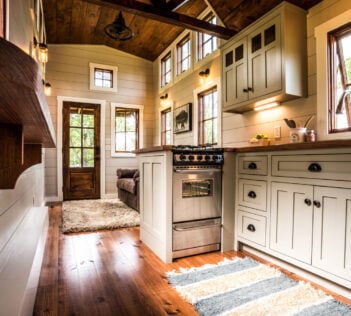
Decorative Rugs For Your Tiny Home
If you’re living in a smaller home, making the most of limited living space can be tricky. One way to add some style and warmth to your small home is by choosing decorative rugs that fit your design aesthetic while also making the most of the available floor space. Ensuring that your rug or carpet matches your decor and appliances is especially important in tiny homes. Thankfully, decorative rugs come in all shapes, sizes, colors, and materials so there’s something for everyone! To help you find just what you’re looking for, here are eight types of decorative rugs perfect for any tiny house. From classic area rugs to bold statement pieces, these stylish options will give your compact space an inviting touch without taking up too much room.
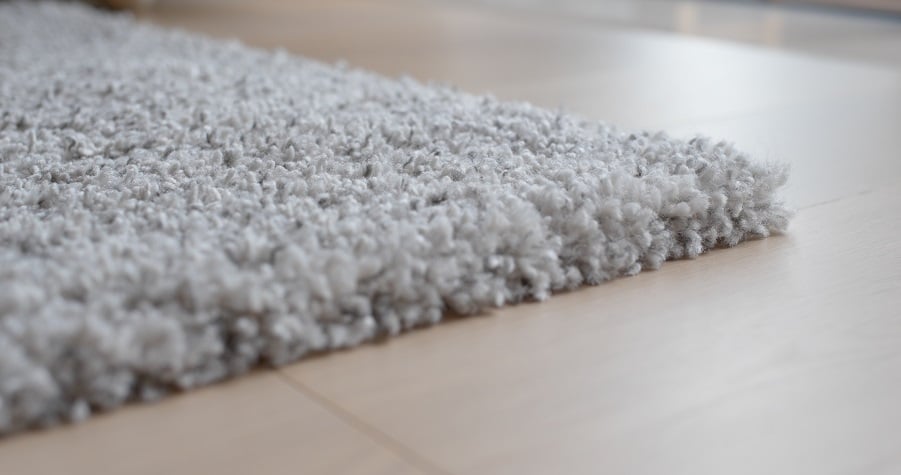
1. Traditional Persian Rugs
Persian rugs have been around for centuries and are still popular today. These timeless pieces bring traditional elegance to any room, no matter the size. Choose a smaller rug with intricate patterns to make the most of your limited floor space while also adding an old-world charm to your tiny home. A statement-piece Heriz Persian Rug that commands attention is also a great option to give your room an instant touch of grandeur. Additionally, these rugs are easy to clean and maintain, making them ideal for busy households.
2. Shag Rugs
For a cozy and inviting feel in your small or minimalist home, consider adding a soft shag rug to the mix. These plush pieces come in all shades and sizes, so you’re sure to find something that will match your style. You can opt for a neutral color, black and white, or choose from an array of bold colors and textures including long-pile sheepskin or ultra-soft faux fur for a luxe look that won’t overwhelm the space. Add some warmth to hardwood floors or give tile an instant upgrade with one of these comfy carpets!
3. Moroccan Rugs
These rugs have become increasingly popular over the last few years thanks to their bright colors and unique patterns. These eye-catching pieces are the perfect way to add a bold statement to your tiny home without taking up too much space. From intricate geometric prints to vibrant abstract designs, there’s something for everyone when it comes to Moroccan rugs. They’re also great for a smaller dining room. Thick pile models also offer extra cushioning while flat-weave versions are lightweight and easy to maintain – making them ideal for busy households.
4. Kilims
Kilims are flat-weave rugs that originated in ancient Turkey and have been used in interior design for centuries. Known for their bright colors and beautiful designs, these carpets have been popular for centuries and remain in style today. Perfect for small spaces, kilims are lightweight enough to be hung on walls or used as a runner rug along narrow hallways. Plus, their low-pile construction makes them easy to clean and maintain too. When shopping for a kilim, look for pieces made of wool and cotton, as these fibers are the most durable. No matter where you display it, a kilim can add texture and visual interest to any room!
5. Jute Rugs
A great option if you’re looking for something that’s both stylish and sustainable. These natural boho carpets come in a variety of colors and textures for an understated look that will add warmth and texture to any room. Jute rugs are incredibly durable so they should last for years to come – perfect for busy households or homes with pets! The lightweight construction also makes these rugs easy to move around or roll up when needed. And if you’re looking for an even more eco-friendly option, many of these rugs are made with recycled materials so you can make a green statement in your home.
6. Sheepskin Rugs
Sheepskin rugs bring a cozy feel to the space while adding some luxury at the same time. These stylish carpets come in both long-pile and short-pile varieties, so you can choose one based on your preference and the amount of space you have available. Not only do they look great but sheepskin rugs are also incredibly comfortable to walk on – perfect for adding some extra warmth in a chilly room. Additionally, hand-woven wool rugs are washable rugs and easy to care for – they can last for years if maintained properly, even in a high-traffic area of your home. Consider pairing it with a throw or some other soft furnishings to bring your space together in style.
7. Natural Fiber Rugs
An accent rug for many home decor styles, these rugs are a great way to introduce some texture into your tiny home without overwhelming the space. Choose from materials like seagrass, jute, or sisal for an eco-friendly option that’s both durable and stylish. Plus, these simple designs will add a subtle touch of pattern to any room while still being neutral enough to blend in with your existing decor – you can even choose from an entire color palette or different geometric shapes. Natural fiber rugs are also easy to clean and maintain, making them ideal for households with pets or kids. Consider even adding a larger natural fiber, hand-knotted rug to your living room for extra comfort and warmth. No matter how you choose to incorporate them into your home, natural fiber rugs are sure to add just the right amount of style and sophistication.
8. Vintage Rugs
If you’re looking for some character in your space, why not consider adding a vintage rug? The unique designs and muted colors of these pieces will instantly give your room an old-world charm without downsizing on other features. Plus, a vintage rug is great as a living room rug or an entryway rug, depending on the number of square feet you want, and it can go well with any coffee table. With regular cleaning and maintenance, these timeless carpets will remain just as beautiful as they were when first purchased. The best way to maintain vintage rugs is to vacuum them regularly with the appropriate setting and brush attachment. This will help reduce dust particles that could cause damage to the fabric and prevent any dirt particles from settling deep into the fibers.
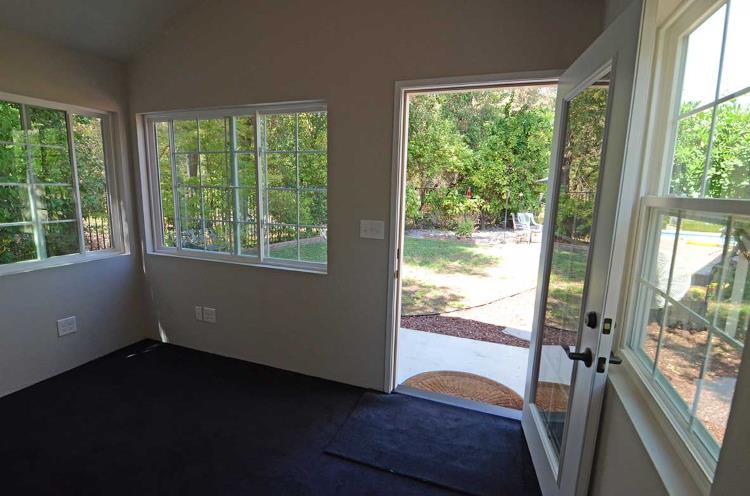
No matter what type of rug you decide to add to your small home, it can transform the look and feel of your space. From quality fibers and vintage finds to kilims and sheepskin rugs, there are so many options available for you to choose from. With a little bit of research, you’ll be able to find just the right piece that will add a touch of style, comfort, and texture to your tiny home.